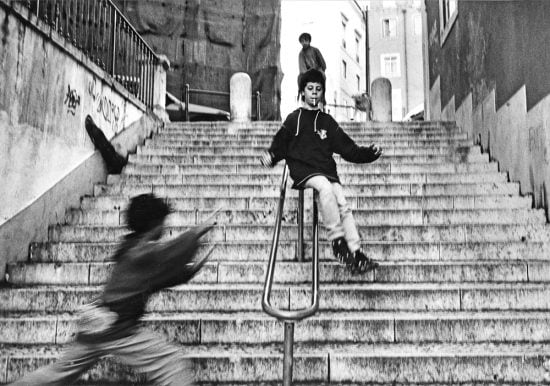The smart Trick of Street Photographers That Nobody is Discussing
The smart Trick of Street Photographers That Nobody is Discussing
Blog Article
Indicators on Street Photographers You Should Know
Table of ContentsThe Basic Principles Of Street Photographers The Basic Principles Of Street Photographers Street Photographers - The FactsThe 5-Minute Rule for Street PhotographersThe Only Guide to Street Photographers
, a genre of digital photography that documents everyday life in a public area. The very publicness of the setup allows the professional photographer to take candid images of strangers, frequently without their expertise. Street photographers do not necessarily have a social purpose in mind, however they favor to separate and capture minutes which might otherwise go undetected.He was influenced by many of those that affected the road digital photographers of the 1950s and '60s, he was not chiefly interested in catching the spirit of the street. The impulse to aesthetically record people in public began with 19th-century painters such as Edgar Degas, douard Manet, and Henri de Toulouse-Lautrec, who functioned side by side with photographers attempting to catch the essence of city life.
Due to the fact that of the fairly primitive innovation offered to him and the lengthy direct exposure time needed, he battled to record the hustle and bustle of the Paris streets. He explore a series of photographic methods, attempting to discover one that would enable him to catch activity without a blur, and he found some success with the calotype, patented in 1841 by William Henry Fox Talbot. In contrast to Atget, professional photographer Charles Marville was employed by the city of Paris to create an encyclopaedic paper of Haussmann's metropolitan planning project as it unfolded, thus old and new Paris. While the photographers' subject was basically the exact same, the results were noticeably different, demonstrating the influence of the photographer's intent on the character of the photos he produced.
The Ultimate Guide To Street Photographers
Given the fine quality of his photos and the breadth of material, engineers and artists usually got Atget's prints to make use of as reference for their very own job, though industrial interests were barely his primary motivation. Instead, he was driven to photograph every last residue of the Paris he enjoyed. The mingled passion and necessity of his mission luster through, causing photos that tell his very own experience of the city, top qualities that expected road photography of the 20th century.

Unlike his peers, Brassa used a larger-format Voigtlnder cam with a longer exposure time, compeling him to be a lot more computed and thoughtful in his practice than he could have been if utilizing a Leica. (It is thought that he might not have actually been able to afford a Leica during that time, yet he did, however, utilize one in the late 1950s to take colour photos.) Brassa's photographs of the Paris underworld brightened by man-made light were a discovery, and the compilation of the series that he released, (1933 ), was a major success.
The 6-Second Trick For Street Photographers
It is due to this fundamental understanding of the art of photo taking that he is often credited with finding the tool throughout once again about a century because its creation. He took pictures for greater than a half century and affected generations of photographers to trust their eye and intuition in the moment.
These are the questions I shall attempt to respond to: And after that I'll leave you with my very own meaning of road digital photography. Yes, we do. Allow's start with specifying what an interpretation is: According to it is: "The act of specifying, or of making something precise, distinctive, or clear".
No, absolutely not. The term is both limiting and misguiding. Seems like a road photography ought to be photos of a streets right?! And all road photographers, other than for a tiny number of visit this web-site outright novices, will fully appreciate that a street is not the key part to street digital photography, and in fact if it's a photo of a road with maybe a few monotonous individuals not doing anything of rate of interest, that's not road photography that's a picture of a street.
Getting My Street Photographers To Work
He makes a legitimate point do not you believe? While I concur with him I'm not certain "candid public digital photography" will certainly capture on (although I do kind of like the term "candid digital photography") since "street photography" has been around for a lengthy time, with many masters' names affixed to it, so I believe the term is right here to remain. Street Photographers.
You can fire at the beach, at a festival, click for info in an alley, in a park, in a piazza, in a coffee shop, at a museum or art gallery, in a metro terminal, at an occasion, on a bridge, under a bridge ...
What Does Street Photographers Mean?
Yes, I'm afraid we terrified no choice! Without policies we can not have a definition, and without an interpretation his response we do not have a genre, and without a genre we don't have anything to specify what we do, and so we are stuck in a "regulations definition genre" loop! - Street Photographers

Report this page